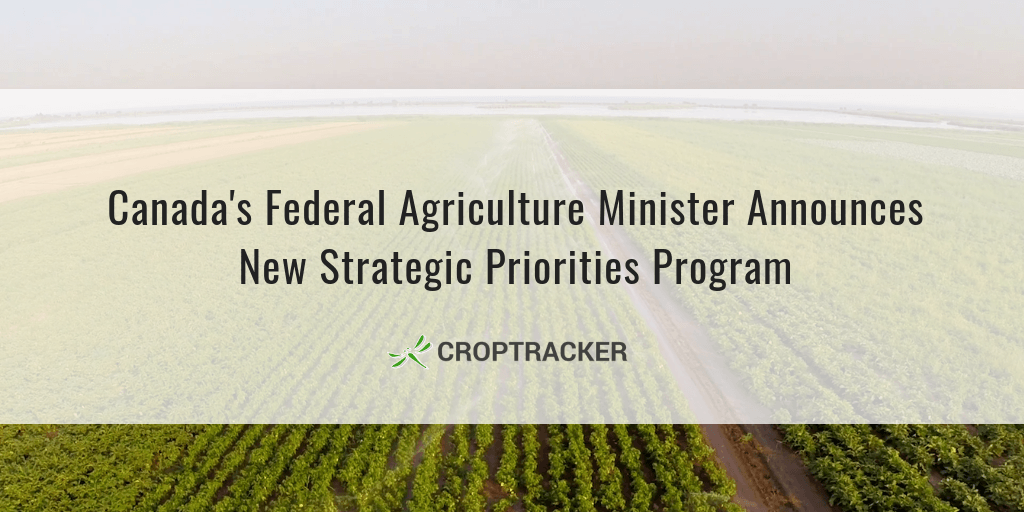Last week the Canadian government announced the Canadian Agriculture Strategic Priorities Program (CASPP). According to federal agriculture minister Lawrence MacAulay, the program's objective is to foster the Canadian agricultural sector’s ability to seize opportunities, respond to new and emerging issues, and to generate solutions in order to remain competitive. CASPP will provide $10 million per year of non-repayable contribution funding and focus on four priority areas: adoption of new technology; environmental sustainability; strategic development and capacity building; and emerging issues.
What are some examples of potential eligible projects?
Examples of potential projects could include those addressing artificial intelligence technology, tools to assess future labour and skills needs, bio-crops, and environmentally sustainable farming techniques and strategies to help the sector adapt to changes in consumer preferences.
Who is eligible?
Eligible applicants under CASPP are not-for-profit organizations including associations, cooperatives and marketing boards; and Indigenous groups. (Preference will be provided to applications that are in partnership with entities that serve the aims of the project’s proposed result.) For-profits may be considered for funding in situations where significant benefits will be applied to the entire sector, public safety, and/or the public good.
What are the assessment criteria?
Applications under the program will be assessed based on the program principles. The following criteria will be used to assess the application form and supporting documents. These program principles must be substantiated, to AAFC’s satisfaction.
- - CASPP Objective: how well the project meets the objective of CASPP.
- - CASPP Priorities: applications that do not respond to the range of priority areas may be assessed for lower AAFC contributions, require higher industry contributions, or both. Applications that align, to a lesser degree with the priorities will be viewed as lower importance to the department, and may not be considered for funding.
- - Benefits to Canada: applications that provide benefits to Canada, including producers, processors, and other stakeholders in areas such as: increased revenues or decreased operating costs in the agricultural sector, increased demand for primary agriculture and/or agri-based inputs or increased employment in the sector.
- - Canadian Agriculture Industry Collaboration: applications will be assessed by the degree to which each project involves or is supported by groups or individuals in the Canadian agriculture sector that represent the targeted sector within a national or sector-wide scope, and the ultimate benefits of the stakeholders of the targeted sector.
- - Feasibility: the likelihood that the planned results will be achieved within the timeline; the appropriateness of the project budget; and consideration towards the project risks.
- - Capacity: the applicant’s proven technical, financial and managerial capacity/capability to complete the proposed project.
How much funding can a single successful applicant expect?
The maximum AAFC contribution for a project will normally not exceed $1 million. Applicants can apply for and receive funding for more than one project, but funding will generally not be more than $5 million over 5 years for each applicant.
Cost-sharing?
If approved for funding, eligible project costs will be shared between the applicant's organization and AAFC at a ratio of 50% from the applicant to 50% from AAFC.
AAFC may contribute up to 75% of total project costs where it deems that a project is "a high priority for a sector or addresses a public safety concern of Canadians and clearly demonstrates the benefits to Canadians through significant levels of support". In exceptional cases, AAFC may contribute greater that 75%.
The source of funding can be comprised of cash contributions from other sources including those from other federal government departments, provincial and municipal governments, businesses, academia, etc.
Which costs are eligible to be claimed?
Eligible costs include administrative costs, salaries and benefits, travel costs, capital assets, and other direct project costs (eg. shipping, translation, marketing costs related to production of materials/documents/knowledge transfer, and other costs that AAFC deems eligible.)
Ineligible costs include: meetings and conferences (e.g., AGMs, hosting conferences), minor assets and capital items not specifically required for the execution of a project; building and land purchases; normal costs of establishing a commercial operation; refundable portion of the GST/HST, value-added taxes, or other items for which a refund or rebate is received; hospitality; and in-kind contributions.
What about the Canadian Agricultural Adaptation Program?
CASPP replaces the Canadian Agricultural Adaptation Program.
For information on CASPP and how to apply, refer to Canadian Agricultural Strategic Priorities Program - Applicant Guide.
Want a refresher on any of Croptracker's features? Head over to our Knowledge Base, where you'll find step-by-step tutorials as well as common troubleshooting tips and more. And as always, if you're ever stuck, never hesitate to e-mail us at support@croptracker.com or Live Chat with us by clicking the green speech bubble ![]() in your bottom right-hand corner. We're always happy to help you let Croptracker make your farm become more efficient, safe, and profitable!
in your bottom right-hand corner. We're always happy to help you let Croptracker make your farm become more efficient, safe, and profitable!
| Missed Last Week's Blog Post? Protecting Crops in Summer |


